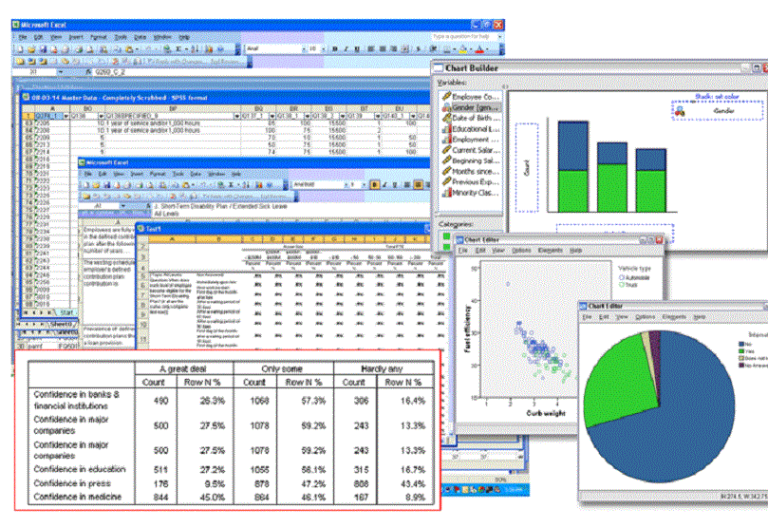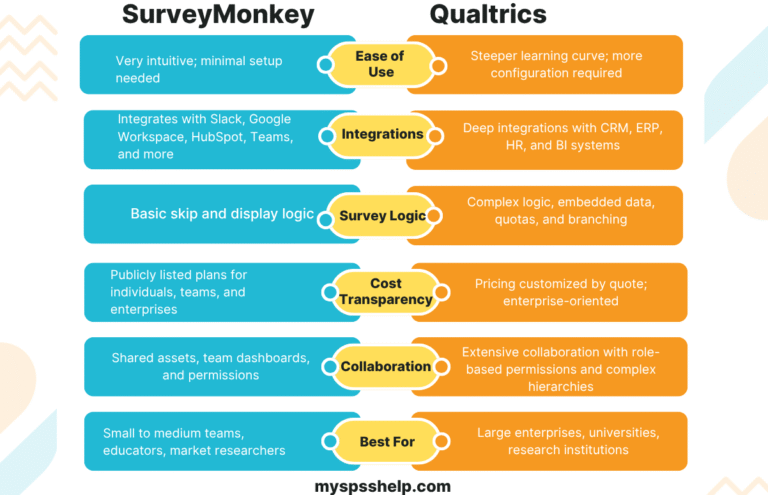How to Create a Qualtrics Survey: Complete Step-by-Step Guide
Qualtrics has rapidly become one of the most trusted platforms for creating online surveys and managing research projects. Whether you are an academic researcher, a business professional, or a market research expert, Qualtrics provides the tools to collect, analyze, and act on survey data effectively. One of the most common questions among new users is how to create a Qualtrics survey. From setting up a new account to designing complex questionnaires and distributing them efficiently, Qualtrics streamlines the entire survey process.
Qualtrics is not only intuitive but also highly flexible, allowing users to incorporate advanced logic, branching, and custom design elements. For beginners, starting with Qualtrics may seem overwhelming due to its robust set of features, but with the right guidance, you can quickly create surveys that meet professional standards. Features like multiple question types, real-time reporting, and integration with other tools make it ideal for large-scale survey deployment and analysis.
In this article, we will guide you step-by-step on creating a Qualtrics survey. We will start with creating a Qualtrics account and logging in, explain what Qualtrics does in terms of survey management, and then move into the detailed process of designing, distributing, and analyzing your survey. We will also cover best practices to ensure your survey gathers high-quality responses. By the end of this guide, you will be able to confidently use Qualtrics to conduct surveys for research, feedback collection, or business insights.
1. Creating a Qualtrics Account
The first step in creating a Qualtrics online survey is setting up a Qualtrics account. Without an account, you cannot access the survey tools or save your projects. To get started, visit the Qualtrics website and click on the “Sign Up” or “Create Account” option. New users are required to provide an email address, full name, and a password. If you are affiliated with an institution, such as a university, you may be able to sign up using your institutional credentials.
After registration, Qualtrics sends a verification email to the provided address. It is crucial to check your inbox and click on the verification link to activate your account. Without this step, the account setup remains incomplete. Once verified, you can proceed to the Qualtrics login page. Enter your email and password to access the dashboard. This dashboard serves as your central hub for all projects, surveys, and data analysis.
Once logged in, you will notice a clean and organized interface. The “Create Project” button allows you to start a new survey, while other tabs provide access to survey templates, reporting tools, and account settings. Familiarizing yourself with the dashboard is essential for efficient workflow. It is also recommended to explore the settings to customize notifications and user preferences.
Creating a Qualtrics account is more than just entering credentials—it is your gateway to professional survey design. A well-set-up account ensures smooth survey creation and data management. By completing these steps, you lay a strong foundation for all subsequent survey projects, making it easier to create a Qualtrics survey effectively and professionally.
2. Understanding Qualtrics: What Does It Do?
Before diving into survey creation, it is essential to understand what Qualtrics does. Qualtrics is more than just a survey tool—it is an experience management platform designed to capture and analyze data from a variety of sources. The platform allows users to design surveys, collect feedback, and interpret results using powerful analytics tools.
Qualtrics enables organizations to manage the entire survey lifecycle efficiently. With its advanced survey-building capabilities, users can create complex question types such as multiple choice, matrix tables, ranking, and open-ended responses. Additionally, conditional logic and branching allow surveys to adapt dynamically based on respondents’ answers, ensuring relevant questions are presented to each participant.
Beyond survey design, Qualtrics excels in distribution and response collection. Users can send surveys via email, generate anonymous links, post surveys on social media, or even embed them into websites. Integration with other tools, like CRM systems and analytics software, ensures seamless data collection and reporting.
Qualtrics also provides analytics dashboards for reporting and insights. These dashboards can generate real-time visualizations, such as charts, graphs, and cross-tabulations. By providing advanced statistical analysis capabilities, Qualtrics helps users interpret data accurately and make informed decisions.
Understanding the full scope of what Qualtrics does is vital for maximizing the platform’s potential. It allows you to leverage the platform not just as a survey creation tool but as a comprehensive system for collecting actionable insights and driving data-driven decisions. Mastery of these features is crucial when learning to create a Qualtrics survey.
3. Creating a Qualtrics Survey
Once your account is active and you have logged in, the next step is to create a Qualtrics survey. This process begins by navigating to your dashboard and clicking on the “Create Project” button. You will then be prompted to choose “Survey” as your project type. Qualtrics offers several ways to start a survey: you can begin from scratch, use prebuilt templates, or import an existing survey. Templates are particularly useful for beginners as they provide ready-made question structures and logical flows.
After selecting a template or starting fresh, give your survey a clear and descriptive name. Naming your survey is important, especially if you plan to create multiple surveys, as it helps with organization and management. You can also assign surveys to folders within your dashboard to maintain a tidy workflow.
Survey design in Qualtrics is intuitive. The Survey Builder allows you to add multiple question types, including multiple choice, dropdown, matrix, slider, and open-text questions. For each question, you can set required responses, randomize answer choices, or apply branching logic to direct respondents to different paths based on their answers. Branching and logic are crucial for creating personalized surveys that respond to participants’ input dynamically.
Customizing the look and feel of your survey is equally important. Qualtrics enables users to adjust themes, fonts, and colors, and to add logos and images. This ensures that your survey aligns with your branding and provides a professional appearance. Additionally, previewing your survey before distribution is recommended. The preview mode allows you to experience the survey exactly as your respondents will, helping you identify errors, optimize question order, and ensure clarity.
By following these steps, you can confidently design and create a Qualtrics survey that is functional, visually appealing, and ready for distribution. Mastering this stage lays the foundation for collecting reliable, high-quality data.
4. Distributing Your Survey
After designing your survey, the next critical step is distribution. A survey’s success depends not only on its design but also on how effectively it reaches your target audience. Qualtrics provides multiple methods for sharing your survey, making it versatile for academic, business, or research purposes.
The most common method is email distribution. You can use Qualtrics’ email tools to send personalized invitations to your respondents. Features include automated reminders for non-respondents and customizable email templates to enhance engagement. Qualtrics also allows scheduling, so your survey reaches participants at optimal times for higher response rates.
Another popular distribution method is using anonymous links. These links can be shared via social media, websites, or messaging platforms. They are ideal for reaching a broader audience without needing email addresses. Qualtrics also provides QR codes that respondents can scan using smartphones, which is particularly useful for in-person events or conferences.
For organizations with existing audiences, integrating surveys into newsletters or websites ensures higher visibility and engagement. Social media sharing, such as posting on LinkedIn, Facebook, or Twitter, can also drive participation, especially when combined with incentives for completion. Incentives, such as gift cards or entry into a prize draw, often increase response rates and improve data quality.
Before distribution, it is crucial to configure settings, such as response limits, expiration dates, and whether responses are anonymous or tracked. These configurations ensure data integrity and help manage the survey lifecycle efficiently. By strategically distributing your Qualtrics online survey, you maximize reach, engagement, and the overall quality of responses collected.
5. Analyzing Survey Responses
Collecting responses is only part of the survey process; analyzing the data is where actionable insights emerge. Qualtrics offers robust tools to process, visualize, and interpret your survey results effectively. Once your survey is live and responses start coming in, you can access the “Data & Analysis” tab within your dashboard. This section provides a detailed view of each response, allowing you to filter, segment, and export data as needed.
Qualtrics supports exporting survey data in multiple formats, including CSV, Excel, and SPSS, enabling more advanced statistical analysis if required. The platform’s built-in reporting tools also allow you to generate visualizations, such as bar charts, pie charts, cross-tabulations, and trend analyses, making it easier to identify patterns and key insights. For instance, if conducting an employee engagement survey, these analytics can highlight satisfaction levels, engagement gaps, and actionable recommendations.
Advanced features include text analysis for open-ended responses, sentiment analysis, and predictive analytics. These tools help you understand not just what respondents answered, but why, providing deeper insights. By applying these analytic tools, you can convert raw survey data into meaningful conclusions, enhancing decision-making in business, research, or academic contexts.
Additionally, Qualtrics provides automated reporting, allowing scheduled reports to be sent to stakeholders regularly. This ensures that results are communicated promptly and supports data-driven decision-making processes. Properly leveraging these analytics transforms your Qualtrics online survey from a simple data collection tool into a powerful insight generator, driving strategic actions and informed outcomes.
6. Best Practices for Survey Creation
To ensure your survey yields high-quality data, following best practices in survey design and distribution is essential. First, clearly define your survey objectives. Knowing precisely what you want to achieve helps in crafting relevant questions, reducing unnecessary complexity, and ensuring meaningful insights. Ambiguous goals often lead to scattered or irrelevant responses.
Keeping your survey concise is equally important. Long surveys can lead to fatigue, reducing response quality or increasing dropout rates. Aim to include only questions necessary to meet your objectives. Use simple, clear, and neutral language to avoid misunderstandings or biased answers. Complex wording or double-barreled questions can confuse respondents and skew results.
Question order and structure also matter. Begin with less sensitive questions to ease respondents into the survey. Group similar topics together and use logical sequencing to create a smooth flow. Qualtrics’ branching and skip logic features can further personalize the survey, improving respondent engagement and data accuracy.
Pretesting your survey is another crucial step. Conduct pilot testing with a small, representative sample to identify issues, ambiguities, or technical glitches. Feedback from pretesting allows refinement before full deployment. Additionally, consider your target audience’s accessibility needs, ensuring your survey is mobile-friendly and compatible across devices.
Finally, ethical considerations such as informed consent, anonymity, and data privacy must be observed. Clearly explain the purpose of the survey, how data will be used, and any incentives for participation. By adhering to these best practices, you ensure that your create Qualtrics survey process produces valid, reliable, and actionable data that truly supports your research or business objectives.
Conclusion
Creating a survey in Qualtrics is a structured process that, when done correctly, delivers reliable insights for research, business, or academic purposes. By setting up your Qualtrics account, navigating the Qualtrics login, designing and customizing questions, and distributing your survey strategically, you can gather high-quality data that informs meaningful decisions. Understanding what Qualtrics does and following best practices—such as clear objectives, concise questions, and pilot testing—ensures your Qualtrics online survey engages respondents and provides actionable results.
Ready to streamline your survey process and get accurate insights? Let our team of professional survey designers help you create a Qualtrics survey tailored to your needs. Visit My Survey Help today to get started and take the first step toward smarter data collection!







One Comment
Comments are closed.